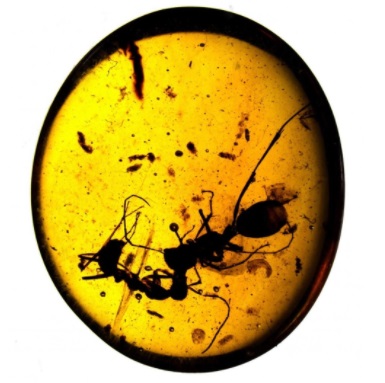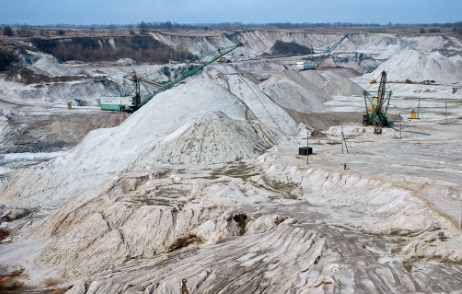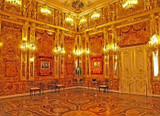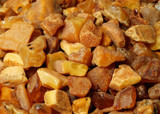9 Facts about Baltic Amber.
Amber has been a highly valued material for making jewelry for many years. This natural gem creates interest among many people because it is not only beautiful in appearance, but it has a long history and many unique features. Bellow you can find a list of some of the most interesting facts about Amber.
1. There Are Different Types of Amber.
Since Amber is being found in different parts of the world, it is being categorized based on that. The most-known type is Baltic Amber, which is found near the coast of Baltic Sea. The age of Baltic Amber varies between 25 - 130 million years, so it is the oldest type of Amber. This particular type of Amber contains large quantities of Succinic Acid, so it is quite commonly referred to as Succinite Amber. There are also types of Amber that don't contain this acid and they are called Retinite Amber.
The other two areas that are known for their Amber resources are Dominican Republic and Mexico. Amber in these two areas started to form 20-30 million years ago from two species of trees - Algarrobo and Hymenaea.
2. Amber Floats on Water.
Unlike most gemstones, Baltic Amber has the capacity to float on water that is salted. This feature of Amber is possible because it is very light in weight. Many people who are aware about this characteristic, find it very useful when trying to separate fake and real Amber.
3. Various Plants and Creatures Were Trapped in Amber.
 Many scientists value Amber, because this natural gem provides valuable information and proof about some plants or species that are extinct today. During the time that Amber was exuded by trees, it trapped some minerals, animals and plant materials inside of it. Within time Amber hardened and it created perfect conditions for these mentioned components to be preserved. Today these preserved fossils are called Amber Inclusions and they've helped scientists to identify more than one thousand insect species that are extinct.
Many scientists value Amber, because this natural gem provides valuable information and proof about some plants or species that are extinct today. During the time that Amber was exuded by trees, it trapped some minerals, animals and plant materials inside of it. Within time Amber hardened and it created perfect conditions for these mentioned components to be preserved. Today these preserved fossils are called Amber Inclusions and they've helped scientists to identify more than one thousand insect species that are extinct.
4. It Comes in More Than 300 Colors.
Many people who are familiar with Amber tend to associate it with orange or yellow colors. However the fact is that Amber can be found in many other colors like blue or green. It happens quite commonly that Amber color is influenced by plant material or other inclusions that are present in this gem. Some of the most commonly distinguished colors of Amber are lemon, honey, cognac, butterscotch, green and cherry. Some sources tend to list even more than three hundred shades of this natural resin. It is also worthwhile to mention that some colors of Amber tend to be more rare than others, which quite commonly determines the price of this natural gem.
Since it takes thousand of years for Amber to form, it often happens that it gets exposed to light and different weather conditions. All this can have an effect on Amber color and surface. When this natural gem is exposed to heat or high temperature, it can create cracks and it can cause Amber to fracture.
5. Resources Are Limited.

Since formation process of Amber (from tree resin) requires millions of years, deposits of this natural gem are decreasing. Supply of Amber is becoming lower not only due to mining process, but also because trees extracting Amber resin are being cut or burned. If this process will not change, the supply of this natural gem will continue to dwindle.
The top layers of Baltic Amber that are easier to extract were exhausted before year 1850. Most of current Amber resources are located in Kaliningrad region (Russia), near the Baltic Sea. This accounts for about 90% of all Amber that can be extracted (~180000 tons). Based on current extracetion levels, it is estimated that Amber resources will be sufficient for another 300 years.
7. Amber Has Triboelectric Effect.
The fact that Amber becomes electrically charged was noticed many years ago. Thales of Miletus, who was a Greek philosopher, noticed that rubbing Amber against a cloth creates sparks and later it can also attract small husks and feathers. Since this kind of effect was new, it was called electricity, which associated with Greek word elektron (meaning Amber).
8. It is not a Gemstone.
Since Amber is mostly used for making jewelry and various decorations, many people think of it as a gemstone. But the fact is, that is actually not a gemstone. Today it is clearly known that it is a natural resin that was formed during fossilization of certain trees.
Scientists throughout the years created various theories about Amber origin until they were able to explain how it is formed. Some researchers even believed that Amber was a fossilized honey made by bees while others thought that it is made from hardened oil.
9. Amber Has a Long History.
Amber is one of the first minerals that was worn by people for decorative purposes. Archaeological findings suggest that it was used in trade as long ago as 28000 B.C. People were fascinated by its beauty and they believed that it has strong powers. Since some features of Amber were difficult to explain at the time (ability to create static electricity), they were attributed to magical powers of this stone.
Throughout the years, Amber was also believed to have health benefits and it was used in treating various illnesses. In Rome it was a commonly recommended medicine for healing head and neck ailments. The price of Amber was quite high at the time and it was even worth more than a slave. Egyptians were also familiar with Amber and they used it in mummification.
Recent Posts
-
The Amber Room.
Creation of The Amber Room. The Amber Room can be considered as the most remarkable creation from …19th Jun 2018 -
Baltic Amber History and Myths.
AMBER HISTORY. Baltic Amber was used by humankind since the beginning of time (the end of Ice Age) …19th Jun 2018 -
Baltic Amber Benefits.
DOES AMBER HAVE HEALTH BENEFITS?Various health and healing properties were attributed to Baltic Ambe …22nd May 2018




